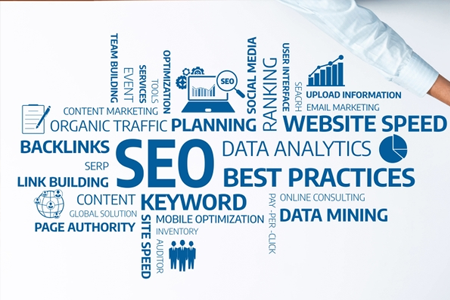In today's digital landscape, having a beautiful website is only half the battle. If your target audience can't find you, even the most stunning design won't bring you business. This is where Search Engine Optimization (SEO) comes in – it's the art and science of making your website more visible to search engines like Google, Bing, and others, ultimately driving more organic (unpaid) traffic to your site.
At ZATAHUB, we believe a strong online presence starts with a solid SEO foundation. Let's dive into the core components of effective website SEO.
1. Keyword Research: The Foundation of Visibility
Before you write a single word or build a page, you need to understand what your potential customers are searching for. Keyword research is the process of identifying these words and phrases.
- Relevance: Are the keywords directly related to your products, services, or content?
- Search Volume: How many people are searching for these terms monthly?
- Competition: How difficult is it to rank for these keywords?
Tools like Google Keyword Planner, SEMrush, Ahrefs, or Ubersuggest can help you uncover valuable keywords that your competitors might be missing. Focus on a mix of broad (high volume, high competition) and long-tail (lower volume, specific, less competitive) keywords.
2. On-Page SEO: Optimizing Your Content & Structure
On-page SEO refers to all the optimizations you can make directly on your website pages.
- High-Quality, Relevant Content: This is paramount. Create content that genuinely answers user queries, provides value, and is comprehensive. Aim for depth and authority in your niche.
- Title Tags: The <title> tag is what appears in browser tabs and search results. It should be concise, include your primary keyword, and accurately describe the page's content.
- Meta Descriptions: While not a direct ranking factor, a compelling meta description (the short snippet under the title in search results) can significantly improve click-through rates. Include keywords and a strong call to action.
- Header Tags (H1, H2, H3...): Use H1 for your main page title (only one per page). H2s and H3s should break down your content into readable sections, incorporating relevant keywords naturally.
- Image Optimization: Compress images for faster loading times. Use descriptive filenames and alt text (alternative text) that includes keywords. Alt text helps search engines understand image content and improves accessibility.
- Internal Linking: Link to other relevant pages within your own website. This helps search engines discover new content and passes "link equity" between pages, improving overall site authority.

3. Technical SEO: Ensuring Search Engine Crawlability & User Experience
Technical SEO focuses on improving the backend of your website to help search engines crawl and index your site more effectively.
- Site Speed: A slow website frustrates users and hurts rankings. Optimize images, leverage browser caching, and consider a Content Delivery Network (CDN).
- Mobile-Friendliness: Google prioritizes mobile-first indexing. Your site must be responsive and provide an excellent experience on all devices.
- Site Structure: A logical, easy-to-navigate site structure (e.g., using breadcrumbs) helps both users and search engines understand your content hierarchy.
- XML Sitemaps: Submit an XML sitemap to search engines (via Google Search Console, Bing Webmaster Tools). This acts as a roadmap, telling them all the important pages on your site.
- Robots.txt: This file tells search engine crawlers which parts of your site they can or cannot access. Use it carefully to prevent indexing of unimportant or duplicate content.
- SSL Certificate (HTTPS): Essential for security and a minor ranking factor. Ensure your site uses HTTPS.
4. Off-Page SEO: Building Authority & Trust
Off-page SEO refers to activities done outside your website to improve its search engine ranking.
- Backlinks (Link Building): When other reputable websites link to your content, it signals to search engines that your site is trustworthy and authoritative. Focus on earning high-quality, relevant backlinks through valuable content, outreach, and partnerships.
- Social Signals: While not a direct ranking factor, a strong social media presence can increase brand visibility, drive traffic, and indirectly lead to more backlinks and mentions.
"Effective SEO is not just about keywords and links; it's about creating a valuable and trustworthy online experience for your users."
5. User Experience (UX): The Indirect Ranking Factor
Google's algorithms increasingly prioritize user experience. Metrics like bounce rate, time on page, and click-through rate indirectly influence rankings. A website that is easy to use, fast, and provides valuable content will naturally perform better in search.
- Improved navigation and site structure.
- Faster page load times.
- High-quality, engaging content.
- Mobile-responsive design.
Conclusion: SEO is an Ongoing Journey
Website SEO is not a one-time task; it's a continuous process that requires monitoring, analysis, and adaptation. Search engine algorithms evolve, and so should your strategy. By consistently focusing on high-quality content, technical soundness, and building authority, you can significantly improve your website's visibility, attract more organic traffic, and ultimately drive business growth.
Ready to boost your website's search engine performance? Contact ZATAHUB today for a comprehensive SEO audit and strategy tailored to your business needs!
